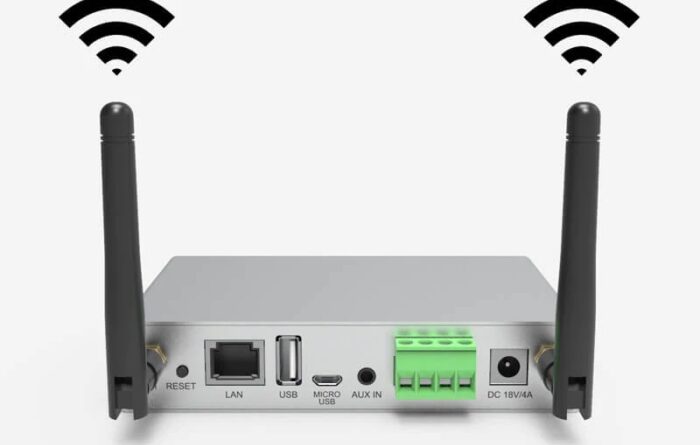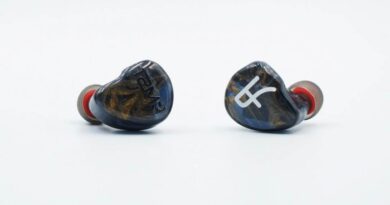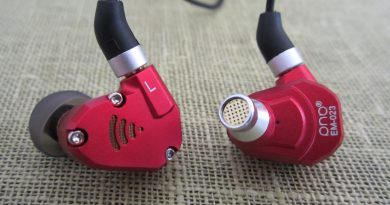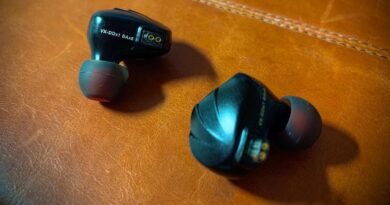Arylic A30+ Network Amplifier And RK30 Satellite Speakers Review – Nice Low-Fi
A30+ is Arylic’s device representing their entry-level offering in the “Network Amplifier” category. Feature-wise, it’s actually much, much more than just a wireless amplifier as I will try to report here below. It can be purchased for $139,99 on their own website, or on Ali Express.
Additionally, Arylic also sent me a pair of their RK30 Satellite speakers, to be assessed with the A30+ of course. You can find them too on Arylic site, costing $149,00 on their own, or on Ali Express again.
In this Article
At-a-glance Card
| PROs | CONs |
| Very wide inbound connectivity options range | Not audiophile grade output sound quality |
| Very wide commercial streaming services direct support | Output into passive speakers only |
| Stable software suite | Physical remote control could be better |
| Basic but reliable Android app | Web interface not working |
| RK30 Speakers: above decent mid centric presentation | RK30 Speakers: Satellite-class speakers, missing most mid-bass and all sub-bass ranges. Recommended sub woofer companion. |
| RK30 Speakers: good build, IP66-grade allowing for external installation |
Features and description
Externals
A30+ is a small (13x8x3cm) and lightweight device. Its enclosure is metallic, and comes with an external 18V/4A non-audio-grade PS.
The front panel offers on the left side a quite big colored led light indicating the current selected input (more on this later). On the right side there’s the (invisible) IR receiver for the handheld “classic” battery operated remote control.
On the back panel instead we can find the connectors for 2 antennas (one for wifi one for BT), an RJ45 ethernet connector marked LAN, a USB-A female connector marked “USB”, a micro-USB female connector marked “micro-USB”, a 3.5mm audio connector marked “AUX”, a green block connector marked “SPEAKER” and the female barrel connector marked “DC 18V/4A”. As a complement, the back panel also includes a “RESET” button.
Internals
Arylic offers a quite wide range of wireless audio devices, both in form of ready-to-use turnkey (sub)systems like this A30+ I’m assessing, and in terms of DIY or at least macro-DIY components, basically populated PCB boards which one can more easily integrate into his/her own audio infrastructure project.
Inside the A30+ there’s a board which is also sold separately under the name “Up2Stream Amp V4“. Simply put, think to it as a SBC-class computer (e.g. a raspberry pi), coming with a certain kit of communication subdevices (the ethernet chip, usb chip, etc), and of course the audio related ones. The board is apparently competently engineered and realised, and most if not all the components involved are “customised” so it’s not easy to “recognise” standard chips on it.
One very important thing to note on the features side is that in spite of its tagline (“Wireless amplifier”) A30+ is not a mere amlifier but a DAC – AMP too, which if course scales its applicative flexibility up a lot!
Connectivity
From the hardware input standpoint, A30+ can connect to music sources in 4 main ways: ethernet (both wired and wireless), bluetooth and USB for digital input, and 3.5mm single ended cable for analog input.
Wired ethernet connectivity is 100base-T grade, via an RJ45 connector. Wireless ethernet connectivity is 2.4G only, quite stable indeed. USB connectivity is USB2-grade, and Bluetooth connectivity follows BT5.0 standards.
On the hardware output side, A30+ offers just one option: connective a pair of passive speakers. It supports both 4 and 8 ohm speakers. There is no preamp output, no s/pdif, no bt out option to connect onto active speakers.
In terms of control input, A30+ obviously does not offer any physical commands on its main chassis. The way for the operator to interacti with it is solely by accessing its sw by remote control.
A30+ offers 3 remote control “channels: 1) a physical “tv-style” battery operated remote control, intended to select inputs, setting volume and tonal control, and little else; it works, although the range is nothing to write home about 2) a web page published by the device’s internal firmware, and accessible by means of a normal browser from any active device (phone or pc) on the same logical network; I was totally unable to make this work – all my browsers on all platforms got stuck on the home page very likely due to some insecurity rejection; 3) an android App (called 4Stream, free to download) allowing full control of the system; the GUI is quite basic so is the UX, but it works solidly, and it’s therefore “the” way to use the A30+
Last but not least, by means of its sw A30+ can be configured as a part of a multi-point Arylic system – for example to obtain multi-room simultaneous playback, or multi-speaker rendering. This is set via the controlling App.
Sound inputs
Input capabilities are no doubt A30+’s strong point, both their number and their apparent reliability.
A30+ can be set up as a system to play music coming from a plethora of online musical streaming services including Tidal, TuneIN, Qobuz, Deezer, Amazon Music and others. No MQA support for Tidal though. No support for Apple Music.
To use any of such services you simply provide your service credentials once via the App. The trick is that the app calls the provider’s own authentication service, and once you log in there the A30+ gets authenticated as a remote device. The good thing is that your credentials don’t (or at least don’t seem to) ever be known let alone saved into the A30+ itself.
Apart for active accounts on the relevant services, prerequisite to this is obviously ethernet connectivity with internet access – no matter if wired or wireless of course. Also: once the configuration is done, the entire operation happens autonomously. You need a phone or a table with Arylic’s app to browse music and play it, but the same phone / tablet may well not have the original service’s own app installed, nor any other phone or pc is required to be linked to A30+ on the same network for this to work.
In addition to the above, A30+ offers DLNA / UPNP connectivity. This means that you can both use the 4Stream App to browse any DLNA-capable NAS or Media Server accessible on the same A30+ network and “pull” tracks in and play them as if they were resident on the A30+ itself, or you can use UPNP-capable applications on Windows (e.g. Foobar, or Musicbee or many others) or Android (e.g. BubbleUPNP) to “see” the A30+ as an eligible “music card”, basically as if it were an active speaker system connected to the same host device.
Intersting to note at this point: on its back panel A30+ carries a USB-A port allowing for the connection of a pen drive, or a hard disk. Once that’s done, the 4Stream App will be able to browse through the tracks saved on that drive and play them out. This to this as a way to avoid DLNA connectivity to a LAN-connected NAS, and just “plug the disk directly onto the player”.
To complete the ethernet picture, A30+ also offers AirPlay1 and Spotify Connect compatibility, together with QPlay which is however not useful outside China .
In terms of Bluetooth connectivity, A30+ makes it quite straightforward to pair a host – provided on remembers to switch to “Bluetooth” input from the 4Stream App in advance. Basically, when A30+ is set to one of the other modes, BT connectivity gets switched off. I found it out the hard way 😉 Supported BT protocols are SBC and AAC only. No APTX nor LDAC are offered.
As I guess you got at this point, A30+ is mainly thought as a small box you put someplace in your sitting room (or kitchen? or bathroom, why not!), just “visible” enough to facilitate wireless connectivity if need be. Once turned on it will act as a wireless gateway between mutiple digital music sources (a home nas, online services, and/or personal mobile devices) and the speakers. That said, A30+ offers some further wired connectivity options, too.
One is a micro-USB port, allowing for the connection to a wired host (a PC, Mac, Linux machine, or a DAP / Transport with USB-out capabilities). When connected this way, A30+ behaves as a “desktop DAC with integrated speaker AMP” – nothing more nothing less. To use it you need to switch over to “USB DAC” input on the 4Stream App, then control volume and tone as you wish.
The last connectivity option is the 3.5mm analog (Line) input. That’s to receive input from a preamp, or a DAC with single ended analog output, or the TV’s AUX OUT for example. Similarly to the above, when connected this way A30+ behaves as a “desktop speaker AMP”. As you guessed by now, to use it this way you need to switch over to “Line In” on the 4Stream App.
When A30+ receives digital input (which is pretty much always, with the sole exception of the analog Line In option) it processes the data with its internal DAC first, then amplifies it out on the speakers. The DAC accepts only PCM formats (FLAC/MP3/AAC/AAC+/ALAC/APE/WAV), no DSD is allowed. Maximum PCM resolution is 24bit / 192KHz, which is consistent with the maximum connectivity speeds allowed by A30+’s ethernet and usb interfaces.
Sound output
A30+ can exclusively output to passive speakers.
Either 4 or 8 ohm speakers are allowed. Of course on 4ohm speakers a double output power (35W max) will be deliverable compared to 8ohm speakers (18W max).
Sadly A30+ required passive interconnects to be screwed into a block-connector, so it was not straightforward to test A30+ with my existing Roth Oli RA1 speakers, which of course I did anyway by taking off the existing bananas from them.
RK30 Satellite speakers
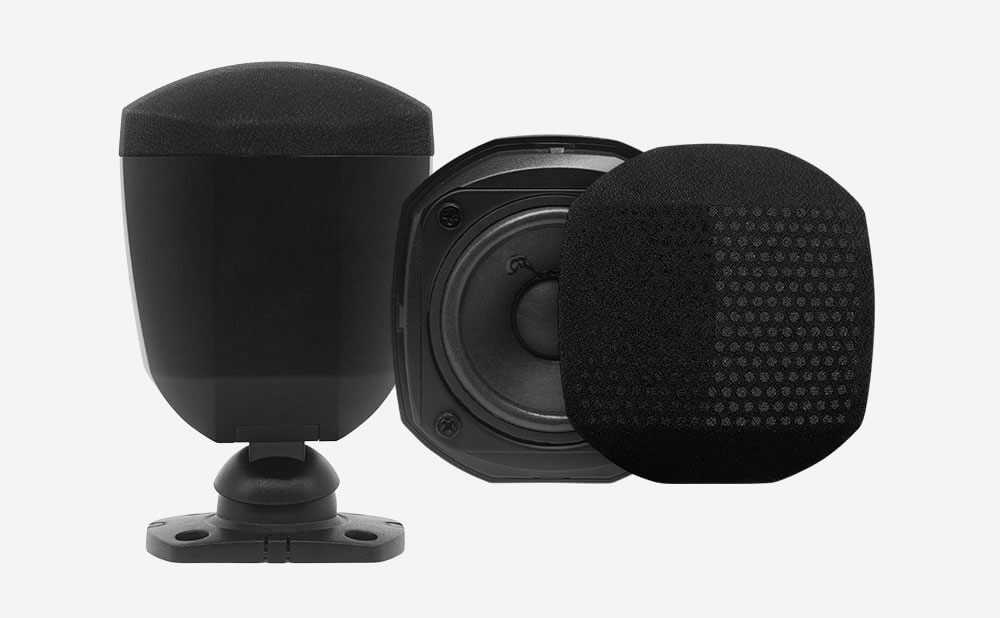
These RK30 Satellite speakers impressed me very positively.
We’re talking about 8 ohm passive “satellite-class” speakers, which means by design their Frequency Response does not take bass and sub bass into account (specs indeed specify a 120 Hz minimum frequency). This should of course be imperatively considered when putting them to work. Taken alone, they can do a good job for “piped music” type airing, or for voice-centric applications as audio/video conferencing and such. For musical applications, they obviously need to be included in a wider system, at the very least a 2+1 one (being the “+1” a companion subwoofer of sort).
Neither the A30+ nor my current desktop speaker amp (an Allo Volt+) can directly manage a subwoofer, so my auditioning of the RK30 Satellites has been “surgical” in a sense. More on this below.
On the structural level, RK30 Satellites are well built. They can be wall-mounted and oriented by means of a turn-tilt base. Very interestingly, their housings are IP66-grade so they can bear rain and moderate watering – which means they can be installed in the garden or on the balcony too.
Sound
A30+
As reported above, A30+ is fundamentally a DAC/AMP offering a very wide range of digital input options.
When used in such capacity, in terms of “audiophile expectations” A30+ delivers very, very modest results. The DAC in particular offers just very basic performances: extension is limited at both ends, presentation is clearly mid centric and fundamentally dull, soundstage is intimate to be generous, and totally bidimensional (lacks depth and height); there is no significant layering / separation capability that I could spot.
Simply put: A30+ is a very nice flexible “low-fi” wireless renderer. Nothing less, but nothing more.
For completeness, the output quality situation gets a bit better when I test the A30+ as a mere AMP, i.e. by pairing its Line In port with one of my existing DACs. In this case A30+ is by far not the best 130$ amp I auditioned, but believe me not the absolute worst either. I am ready to bet, for example, that by simply swapping the IT-grade power supply coming within the package with an at least entry-level Audio-grade PS clarity and dynamic range would furtherly go significantly up.
RK30 Satellite speakers
As I previously already mentioned, RK30 are Satellite speakers not offering (by design) a full frequency range coverage: low-mid-bass and sub-bass are totally absent. What is not supposed to be there in the first place cannot be called “bad” of course.
When auditioned for what the offert, RK30 are actually quite nice inexpensive speakers. Considering what I reported above regarding A30+’s modest sound reconstruction quality, I mainly tested these RK30 with my Allo Volt+ and I must say they do not leave tooooo much to desire on the mid and treble ranges when compared with my Roth Oli RA1. Mid range in particular is quite sweet, with good body and clarity.
Specifications recap
A30+
| Connectivity | Wireless network IEEE802.11 b/g/n 2.4G Ethernet Single 10/100M RJ45 BT 5.0 USB Host Play USB music Micro USB Connect PC as external DAC |
| Power Input | 18V/4A |
| Audio Input | 3.5mm Line in |
| Frequency response | 20Hz to 20kHz |
| Speaker Impedance | 4 – 8Ω |
| Speaker Power | 2x35W@4Ω load at 18V, 2x18W@8Ω load at 18V |
| THD+N | 0.03% @1kHz |
| Music Formats | FLAC/MP3/AAC/AAC+/ALAC/APE/WAV Decoding Up to 24bit/192kHz |
| Protocols | AirPlay1, DLNA, UPnP, Spotify Connect, Qplay |
| Dimensions | 131.8mm x 85.5mm x 27mm |
| Weight | 0.35kg |
RK30 Satellite speakers
| Low Impedance RMS power | 40 Watts |
| Low Impedance Dynamic power | 40 Watts |
| Frequency Response | 120-20KHz |
| SPL 1W/1m | 88 dB |
| Max SPL 1m | 98 dB |
| Impedance | 8 Ω |
| Loudspeaker system | Full Range |
| Woofer Cone Material | Paper |
| Grille Material | Cloth |
| Vertical Dispersion Angle 1000Hz | 180° |
| Mounting System | Turn/Tilt Bracket |
| Housing Material | ABS Plastic |
| IP Certified Weather Rating | 66 |
| Woofer Size | 2.5inch |
| Dimensions | 94 x 108 x 82 mm |
| Weight | 0.48 Kg |
Considerations & conclusions
From a nice little device like the A30+ offering such a well designed and working (!) host of different input options costing well less than 150$ one cannot reasonably expect top sound performances, and this is indeed the reality.
Very simply put, A30+ should not be scored within the audiophile-grade devices market, as that would be quite unfair to begin with. Taken as a non-audiophile-grade device (a “low-fi” wireless dac/amp, if you wish), A30+ is a very nice electronic gadget helping anyone to obtain pleasing sound output easily, coming from an impressive host of different possible sources.
Arylic RK30 Satellite speakers are within their category even better than A30+: when properly integrated with a good subwoofer companion in a 2+1 or 4+1 configuration than can surely offer some good sound quality for a modest budget.
Our generic standard disclaimer.



